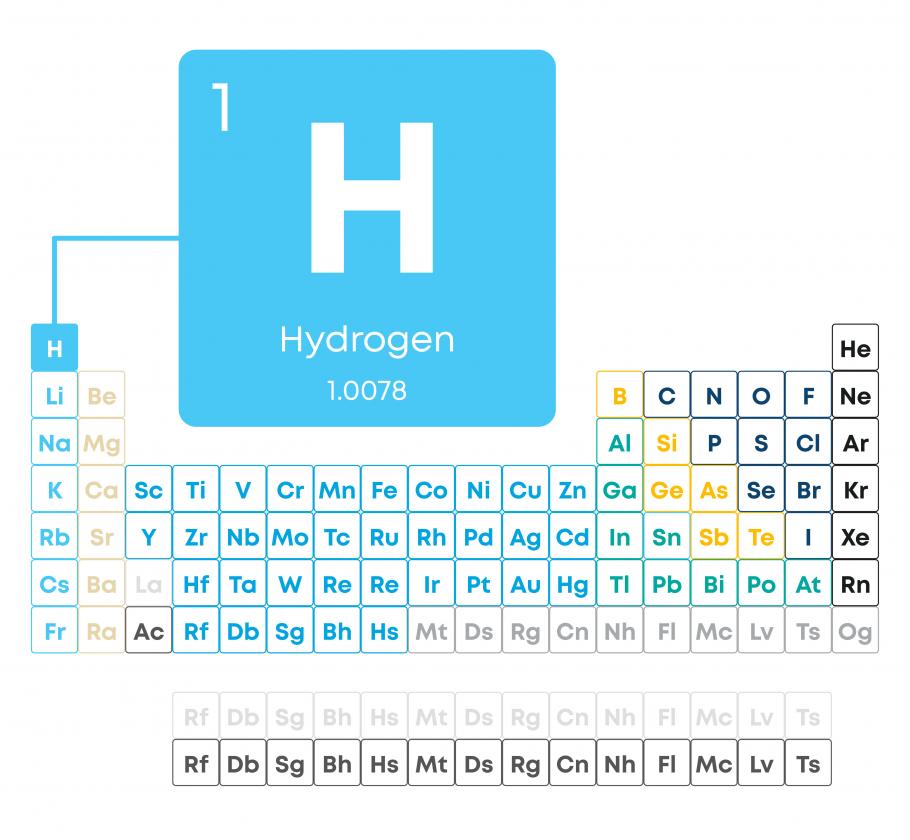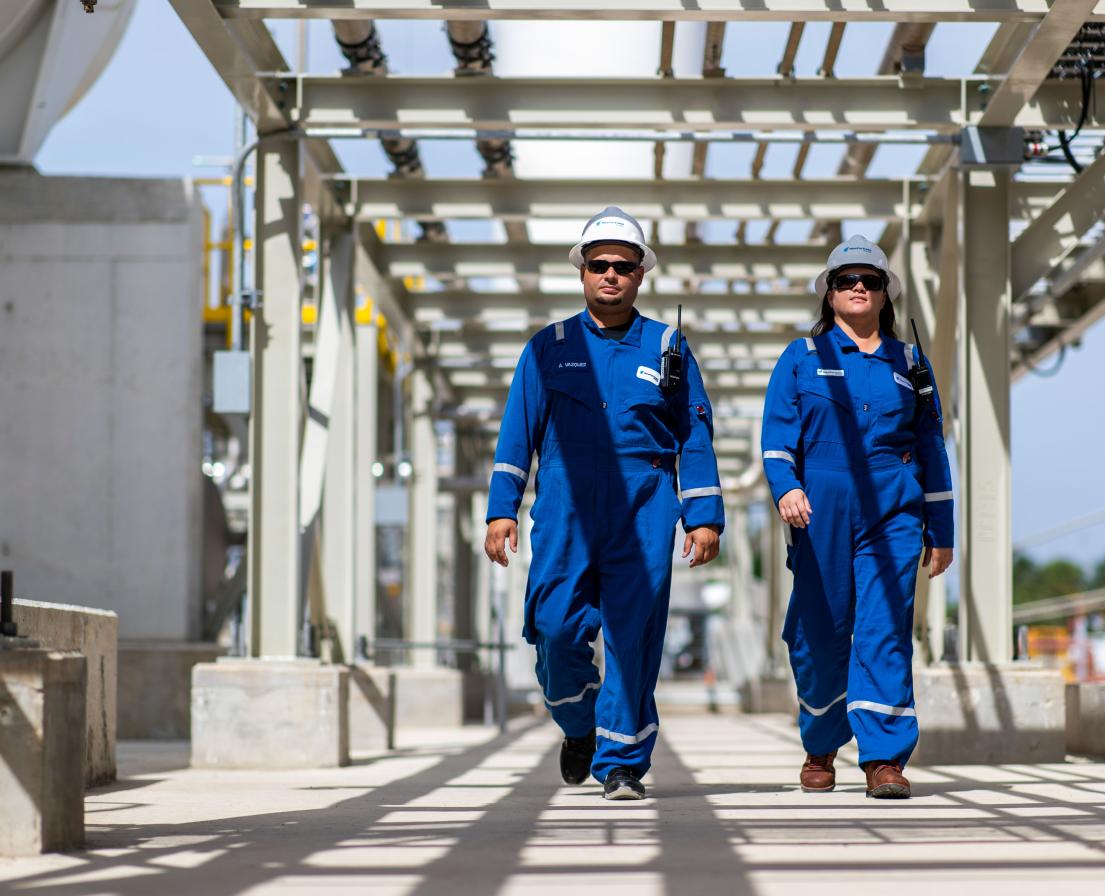What is green hydrogen?
HYDROGEN
Get to know green hydrogen
Hydrogen is everywhere – in water, which covers two-thirds of the Earth, as well as in plants and fuel sources.(1) It’s the first element in the periodic table, and is made of just one proton, one electron, and no neutrons. The most abundant element,(2) hydrogen comprises an estimated 90 percent of all atoms in the universe.(3) Hydrogen is also the lightest gas, and it has no color, no odor, and no taste.
However, in nature, hydrogen only exists paired with other elements such as carbon or oxygen. To be a viable energy source, it must be split from its atomic partners.(5) While traditional methods of extracting hydrogen release carbon into our environment,(6) green hydrogen is an exciting alternative that’s not only clean when it’s used as a fuel, where its byproduct is simply water, but is also clean when it’s produced, leaving behind only oxygen.(7)
Keep reading to learn more about what green hydrogen is, how green hydrogen is made and used, and how it’s helping paint a brighter, greener future.

What is green hydrogen?
Green hydrogen is a fuel that’s made through renewable energy processes,(8) extracting hydrogen from water or other naturally occurring sources with no carbon emissions. You can store green hydrogen for future use, transport green hydrogen through existing natural gas infrastructure, and use green hydrogen to produce electricity and synthetic gas.(9)

How is green hydrogen created?
Producing green hydrogen begins with water,(10) known chemically as H2O for its two hydrogen atoms per one oxygen atom. Using an electric current, through a process called electrolysis, the hydrogen and oxygen are split apart.(11) As long as the electricity comes from sustainable sources such as solar or wind power, the resulting hydrogen is clean and green.(12)

What is green hydrogen used for – and is it safe?
Around the world, millions of metric tons of hydrogen are already being used to refine oil; produce ammonia, chemicals, and fertilizer; manufacture steel; process foods; and power fuel cells for electric vehicles, electronic devices, military operations, electricity or heat generators, and even spaceships.(13) Replacing traditional hydrogen with green hydrogen in these processes can eliminate carbon emissions.
Green hydrogen offers many safety benefits, too. Of course, it emits no pollutants when it’s made, or when it’s used.(14) Weighing in at roughly 57% less than gasoline fumes, it disperses quickly into the atmosphere. If it’s blended with natural gas, at a proportion of 5% to 10%, it can be distributed safely using existing natural gas pipelines.(15)

Why is green hydrogen an exciting option to help fuel our future?
- Cost reduction – The World Hydrogen Council predicts that green hydrogen production costs will fall by 50% by 2030.(16)
- Job creation – According to McKinsey, the U.S. alone could generate $140 billion and support 700,000 jobs through the hydrogen economy.(17)
- Government support – From the U.S. Department of Energy; to the European Union’s Green Deal; to projects in Australia, Chile, Germany, Japan, and Saudi Arabia; to the united efforts of participants in the Paris Agreement, countries worldwide are investing millions, even billions, into green hydrogen.(18)
- Private support – Non-government entities are also actively seeking new ways to leverage green hydrogen. For example, with Breakthrough Energy, Bill Gates and colleagues are investing in research and development to accelerate the viability of green hydrogen as a fossil fuel alternative. The United Nations Green Hydrogen Catapult Initiative is working with seven major green hydrogen project developers to increase production and cut costs.(19)
While economic benefits and widespread support are important, the fundamentally vital potential for green hydrogen to improve our sustainable environmental health cannot be overstated. As we work to reduce carbon emissions globally, particularly in transportation and certain manufacturing sectors such as concrete and steel,(20) green hydrogen could be a game-changer.
